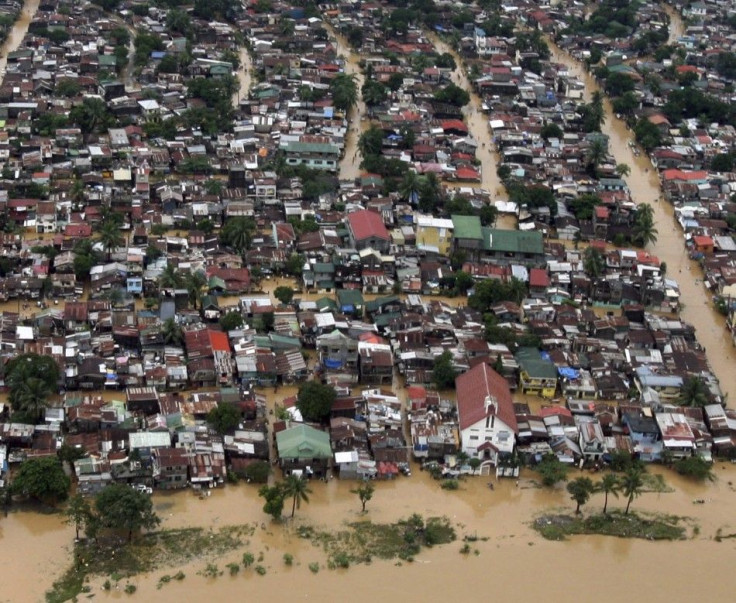Metro Manila, Home To 12 Million, Is An 'Inland Sea' Right Now

Water world. Inland sea. Ondoy II.
These were the terms local officials in the Philippines used to describe the situation in Metro Manila in the midst of record-breaking rainfall that has inundated most of the country's capital region, a zone of 12 million people that includes Manila and the surrounding sprawl.
At least 23 people have been killed, according to Reuters, but the death toll is likely to rise. Wednesday morning's deluge alone dumped 18.5 inches of rain, surpassing the 17.9 inches dumped by Typhoon Ondoy in 2009, according to the Manila Standard. Flooding from rains in 2009 killed at least 747 people in the capital zone, displaced millions and wreaked over a billion dollars in damage.
"I can't distinguish which is the sea and which is the flood," disaster chief Benito Ramos told a local radio station regarding his flyover of this city wedged between two bays, according to the Philippine Daily Inquirer.
Rescue workers in Metro Manila were working Wednesday during a brief respite from the deluge to rush clothing, food and other emergency supplies to nearly one million stranded Pinoys. Red Cross workers were using amphibious vehicles to pull stranded denizens out of the muck.
The estimates on the amount of the city that is inundated range from 50 percent to 80 percent. According to local media, all schools were closed Wednesday and power was shut off as a precautionary measure in several districts in the world's most densely populated metropolis, which includes the capital Manila and its surrounding sprawl.
"If you're going to tally the number of areas affected, then almost the entire metropolis was hit by floods," Corazon Jimenez, general manager of the Metropolitan Manila Development Authority, told the Inquirer.
Inquirer reported that a state of emergency has been implemented on Tuesday, shutting down public and private businesses in the city and nine surrounding provinces on Luzon island. Train service however, remains spotty but operational.
Local media showed people digging into the mud following a row-house collapse in Quezon City, the former capital that makes up the northern districts of Metro Manila. Five bodies were recovered.
On Tuesday, President Benigno Aquino III admonished citizens he said didn't heed warnings. He also ordered his trade officials to monitor the marketplace to ensure no hoarding or price-fixing is taking place.
Citizens reacted angrily to the president's comments.
"The president was caught 'noynoying' (slacking off) again," Rep. Reymond Palatino of the Youth Party told Manila Standard, referring to criticism the president received during floods last year. "He should have been the one waking up his people."
© Copyright IBTimes 2025. All rights reserved.






















